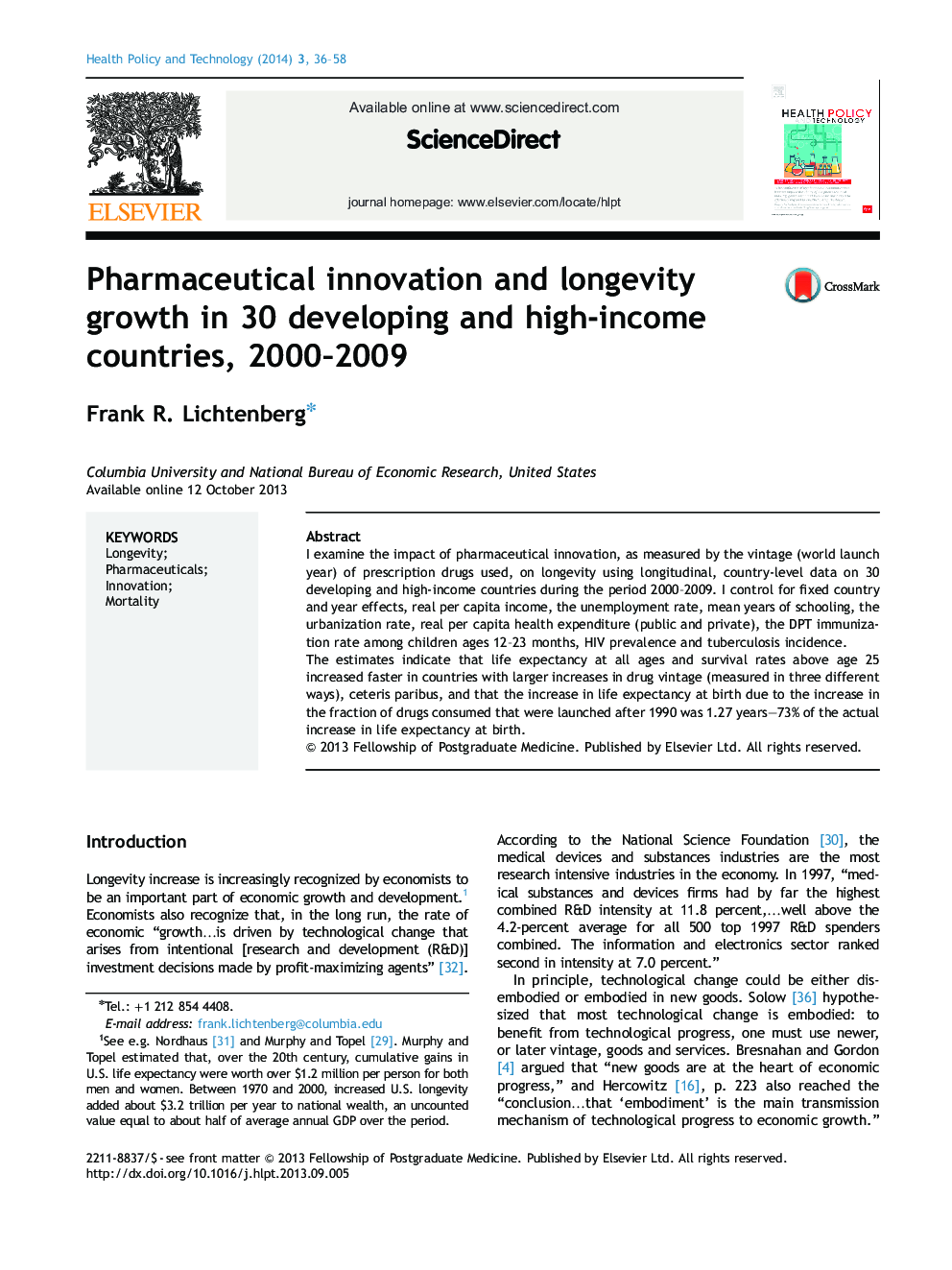| Article ID | Journal | Published Year | Pages | File Type |
|---|---|---|---|---|
| 3327386 | Health Policy and Technology | 2014 | 23 Pages |
•I examine the impact of pharmaceutical innovation on longevity in 30 countries.•I control for fixed country and year effects and important country attributes.•Life expectancy (LE) increased more in countries adopting innovations more rapidly.•Pharmaceutical innovation increased life expectancy by 1.27 years during 2000-2009.•Innovation accounts for 1/3 of the LE gap between lowest and highest countries.
I examine the impact of pharmaceutical innovation, as measured by the vintage (world launch year) of prescription drugs used, on longevity using longitudinal, country-level data on 30 developing and high-income countries during the period 2000–2009. I control for fixed country and year effects, real per capita income, the unemployment rate, mean years of schooling, the urbanization rate, real per capita health expenditure (public and private), the DPT immunization rate among children ages 12–23 months, HIV prevalence and tuberculosis incidence.The estimates indicate that life expectancy at all ages and survival rates above age 25 increased faster in countries with larger increases in drug vintage (measured in three different ways), ceteris paribus, and that the increase in life expectancy at birth due to the increase in the fraction of drugs consumed that were launched after 1990 was 1.27 years—73% of the actual increase in life expectancy at birth.
